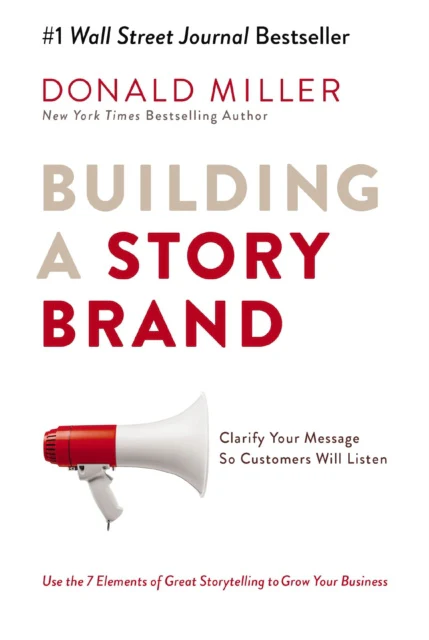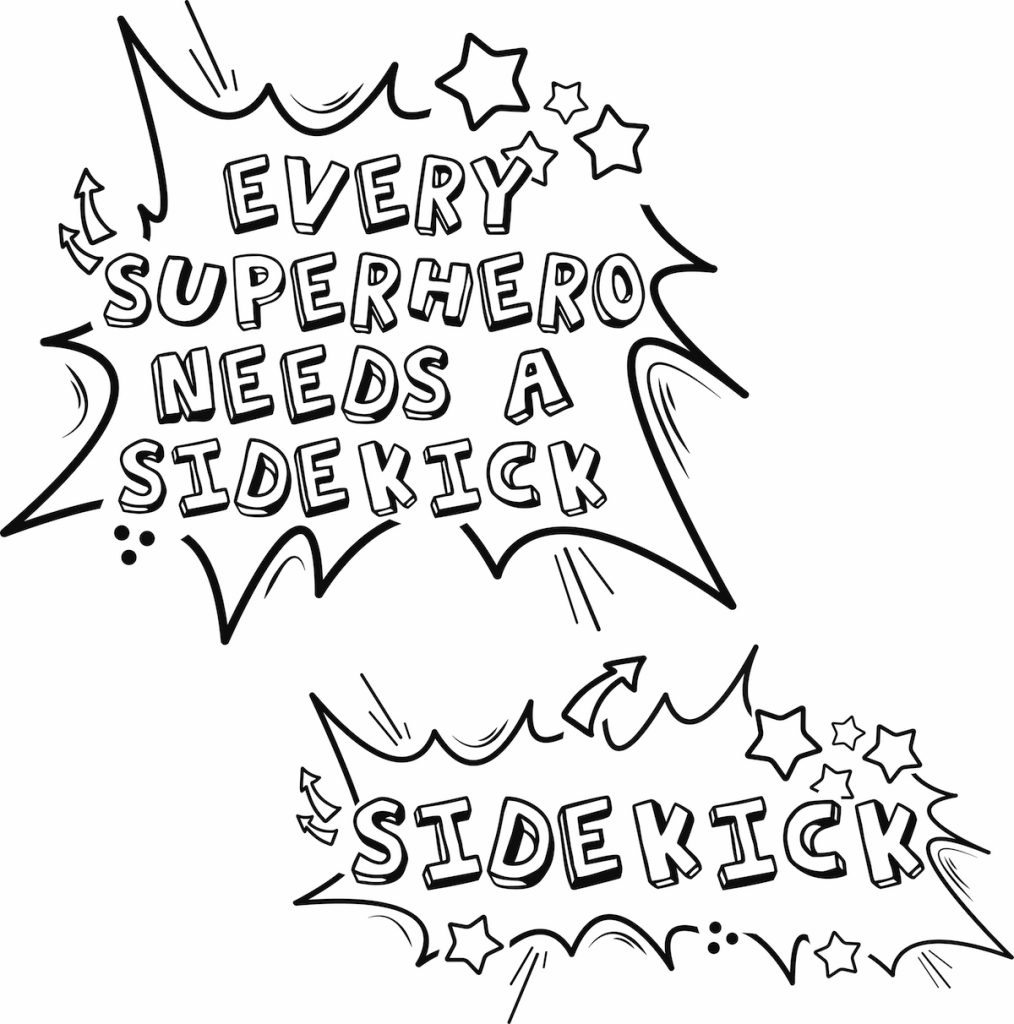You are not the hero. Why brands need to step out of the spotlight
Most brands write themselves into the story like they’re Iron Man. But no one likes a hero who won’t stop monologuing about their own brilliance. Especially when what your customer actually needs is a J.A.R.V.I.S.
Brand storytelling has become a strange kind of theatre. Everyone wants to be the protagonist, the visionary, the world-changer. And in doing so, they forget the one character who matters most: the customer.
The tragedy of the Brand-Hero complex is that it fails. Not so much because it’s self-important, but because it misunderstands the story. It assumes the best way to connect is to inspire through self-display, but people are moved by their own possibility more than by your greatness.
The most effective brand narratives don’t center the brand. They center the audience, the recipient, the “you” who triumphs. And the stories that endure are not the ones that shout “we’re the best”. They are the ones that whisper “this is about you”.
Narrative confusion or, how brands misuse the Hero’s Journey
There’s a well-worn arc behind most traditional storytelling, and it’s one brands have borrowed liberally: The Hero’s Journey. Codified by Joseph Campbell, this structure charts a lone protagonist called to adventure, tested by trials, changed by ordeal, and returned with a gift. It is foundational to myth, literature, and film. And, unsurprisingly, to brand strategy.
It’s easy to see why marketers have been and are seduced. The Hero’s Journey offers clarity. Conflict. Transformation. It makes even software rollout feel mythic. But a structure built for epics often struggles under the weight of real-world application. Particularly, when brands mistake the protagonist’s role for their own.
“We are leaders in our field.”
“We’re on a mission to revolutionize X.”
“We help thousands of people every year.”
Statements like these aren’t wrong, but they often flatten the customer’s place in the story. The audience becomes a passive observer, watching the brand complete a journey they were invited into.
There’s also a deeper irony: The Hero’s Journey isn’t meant to glorify the hero. It’s meant to structure transformation. It’s relational. Metaphorical, even. But too often, brands treat it like a branding badge, not a narrative lens.
Enter the Mentor. The gift of StoryBrand (and its limits)
Donald Miller’s StoryBrand framework emerged as a kind of remedy. Its central argument is: your customer is the hero, your brand is the guide. The StoryBrand framework reframed the storytelling problem entirely. Instead of shouting about achievements, brands were taught to position themselves as mentors: wise, supportive, and non-central.

This shift was quietly radical. It nudged brands out of their own spotlight and into a more useful role. It allowed for empathy, focus, clarity. It also, crucially, aligned with psychological truth: people invest most in stories where they see themselves reflected.
However, even the mentor model can become too rigid. In reality, a brand might serve not only as a guide, but as a world, a threshold, or a catalyst. Not every customer journey wants a J.A.R.V.I.S. (or a Yoda). Sometimes what it needs is a mirror. Or a map.
Still, as a counterweight to ego-arc marketing, StoryBrand remains one of the most effective frameworks available.
So, how does this look in practice?
Case studies. Brands that let the customer lead
IKEA: The catalog as mirror
Once a product catalogue, now a storytelling device, IKEA’s messaging has evolved from listing features to evoking feelings. Their recent sustainability campaigns don’t boast innovation; they suggest agency. They tell stories of how you might live, what you might create, how your home might change.
IKEA doesn’t claim to be the hero. It hands your the tools and lets you decide what to build.
Mailchimp: Creativity without credit
Mailchimp doesn’t foreground its own achievements. It celebrates its users.
From the quirky tone of their copy to their Mailchimp Presents content series, their messaging insists: you’re the one doing the meaningful work. We’re just the infrastructure. The platform exists, but never over-exists. It cheers from the wings.
Duolingo: The unhinged sidekick
Duolingo’s approach is stranger. And smarter. Its viral TikToks are anything but heroic: they’re absurd, self-mocking, and overtly performative. But in centering the user’s language-learning progress, Duolingo makes itself the slightly annoying, oddly lovable character in your story. Or, more precisely, it becomes the chaotic sidekick in your journey.
None of these brands position themselves as the protagonist (hero!). And that makes them all the more memorable.

Emotional geometry. Why relational storytelling resonates
There is a shape to emotional engagement. It isn’t a spotlight but a loop.
Studies in psychology and marketing consistently show that people respond more strongly when they are embedded in the narrative. The technical term is psychological ownership. When we feel we’re part of something, we value it more.
Tell me a story, and I might listen. Make me the story, and I’ll care.
When brands insist on being the subject, they force the customer into the role of object. But when brands offer structure, tools, context, or conflict, the user steps forward. They act. They invest. They remember.
Rewriting the narrative. From ego to empathy
The shift from “we” to “you” is cognitive, not cosmetic. It changes how people read, feel, and respond.
Try this:
- “We launched a new product.” Informational at best.
- “Now you can manage your tasks in half the time.” Emotional, invitational and relevant.
It’s a small syntactic decision with massive rhetorical weight.
This change applies across your content ecosystem:
- About pages should be reframed as invitations instead of autobiographies (how what we believe matters to you).
- Homepages should reflect user desires, not brand achievements.
- Email marketing should lead with transformation, not tools.
It’s all about expressing it in a language your customers can actually hear. (Don’t worry, your value will not be lost in translation.)
You were never supposed to be the star
To say “you are not the hero” isn’t meant to diminish the work you or your brand does. It’s designed to recognize the deeper architecture of story.
The hero does not change alone. There’s always a mentor, a map, a world, a threshold… Your brand may be any of these, but it is rarely, if ever, the one holding the sword.
Your brand doesn’t need to be the star. It needs to be the reason the story even begins.
That’s not a demotion but a promotion to the initiator of transformation.
CTA: Rewrite the center
Try this on for size:
Choose one page from your brand. About, Home, or a key sales email. Ask:
- Who is at the center of this story?
- Whose transformation is being told?
- What emotional verb anchors the message?
Now rewrite it. Start with your customers’ desire. Make them the subject. Let your brand be the reason, but not the headline.







